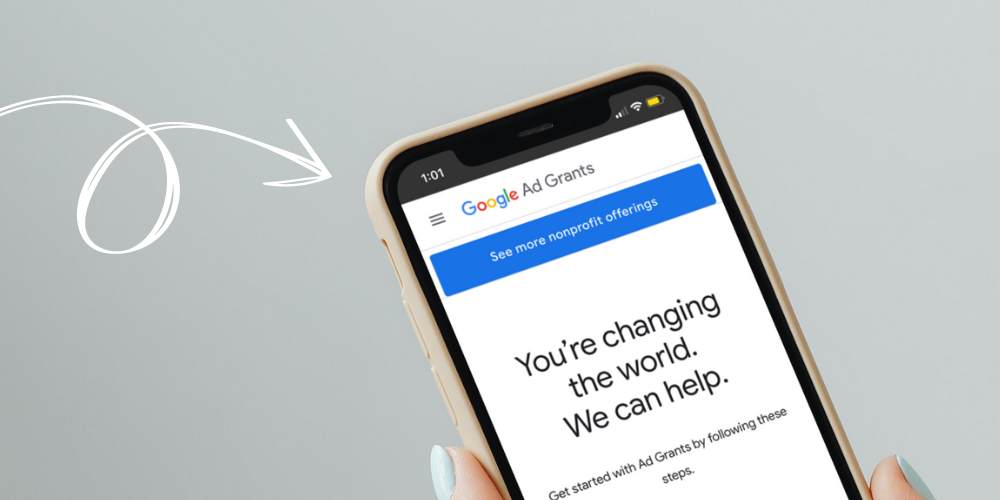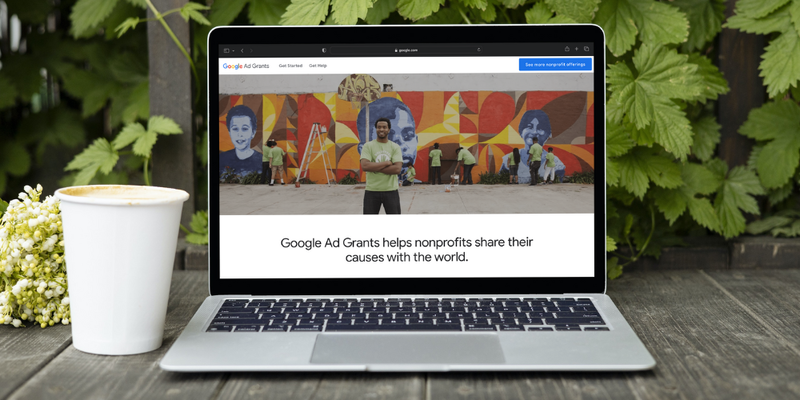
7 steps to using all of your Google Ad Grants budget
Are you using Google Ad Grants?
When I ask nonprofit professionals this question, the answers vary a lot. I hear everything from “Yes, we’re loving it!” to “Yeah…we got approved and haven’t done that much with it,” to, “I know I’m supposed to, but I don’t have time to figure it all out.”
There’s another answer to that question, one that turns out to be even more common than I expected. “Yes, we’re using it, but we never use it all. We never use all of the budget.”
According to Google, the average account spends $300 of the $10,000 available each month.
Now, there are several reasons why organizations don’t spend the $10,000:
- Your search volume determines how much of your budget you spend. If you’re very niche, you may not have incredibly high search volume.
- You may not have a $10,000/month digital ad strategy (i.e. the $10,000 is more than you need for your goals).
- Nonprofits who set their bids manually are capped at a $2 manual bid limit (the Smart Bidding features don’t have this limit) which may reduce their competitiveness.
So the real question is not “Did you spend the entire $10,000 on paid search this month?” It’s “Are you using your Google Ad Grants to its greatest potential for your organization?”
And for most organizations, a total spend of $300 suggests there’s more value to claim.
How do you get more of that value every month? Here are seven tips to get you started.
1. Invest in learning
Digital advertising can be overwhelming and sometimes the intimidation factor is enough to make you skip the whole thing.
Fight this inclination. It’s worth it to learn how the Google Ad Grants works and figure out how you’re going to use it at your organization. You can do it!
Google offers educational resources, nonprofit case studies, and how-to videos to help you understand the finer points of using the grant and building campaigns.
2. Start with a goal
An ad campaign has to be for something. Before you can start researching keywords and writing ad copy, you need to know what you’re trying to accomplish.
Do you want to recruit more volunteers? Promote matching gifts? Help people find a resource? Drive registration for your walk-a-thon? The more specific you can be, the easier it will be to set parameters for your ad and to measure your results.
3. Plan holistically
Paid search is one channel among the many at your disposal. For best results across the board, integrate your campaigns using an omnichannel strategy.
For example, let’s pretend you’re running an ad to download a resource about your cause. What happens after someone clicks on the ad and downloads your resource?
In an omnichannel strategy, they’d get an email that’s relevant to the interest they’ve expressed, offering them a next step.
As you plan for your campaigns, think about the long-term journey you’re taking people on. Where do you want them to end up? As loyal donors? Passionate volunteers? Advocates for your cause?
The journey may start with the ad, but it shouldn’t end there. Use all your channels to guide your new supporter along the way.
4. Long-tail keywords
For the best results (and less expensive bids!) you’ll want keyword phrases that are very specific, AKA long-tail keywords. Put yourself in the mind-set of a person searching for you. What kinds of phrases would they use to search?
One way to make your keywords more specific is to add time and location information to them. “Mentor youth” may not get you in front of your ideal audience, but “Mentor youth Chicago summer” probably will.
There are a lot of tools and techniques for keyword research, but one simple way is to start with one long-tail keyword and Google it yourself.
Are the results you’re getting relevant? Would your ad make sense in that list? If so, look at the related searches Google offers for more relevant keywords.
5. A landing page for every campaign
Of course, the value of Google Ad Grants is not just getting people to click on ads. The hope is that people will see the ad, click on it, and form a connection with your organization.
In order to help that happen, you don’t want to leave much to chance. Sending people to the homepage of your website and hoping they’ll figure out where the donation page or volunteer registration is creates way too much friction.
Instead, create a dedicated landing page for each of your Google Ad campaigns. Resist the urge to crowd this page with every possible piece of information about your organization. Make it very clear that visitors are in the right place to take the action the ad called them to take.
6. Focus on your copy
With all the metrics, and bidding, and cost-per-click data, it’s easy to overlook a very simple way to improve your Google Ad Grant results…what your ad actually says.
The text of your ad is what tells people that you have the information they’re searching for and sparks their interest to learn more.
You don’t need to be a Mad Men-level copywriter to improve your ad copy. You can improve any ad simply by having:
A clear headline
If someone searched “mentor youth Chicago summer,” then they’re probably looking for a place to mentor or be mentored in Chicago in the summer. So an ad with a headline like: “Mentor a Chicago Kid,” or “Summer mentors in Chicago,” or even, “Make a difference this summer!” answers the question, “Is this a place for me to do that?”
Your audience's interests in mind
Space is limited in the body of your ad, so make it count. Continually bring yourself back to the person searching: What do they want to know? What matters to them?
In our summer mentoring ad, we’d want to speak to prospective mentors’ desire to support youth, volunteer, and make a difference:
800 Chicago youth are waiting to be matched with a summer mentor. Is that you?
Make a difference this summer as a youth mentor
One summer can have a lifelong impact.
A call to action
You may think that it is obvious that people should click on your ad, but without a strong call to action, it’s easy to scroll by without doing anything. Use powerful verbs and convey an appropriate sense of urgency.
Learn more today!
Donate now!
Find out how
Join the movement!
7. Test, test, test
Digital advertising is a continuous process of experimentation. A/B testing, measuring against your goals, and tracking trends over time will help you refine your ad strategy, and continue to get even more value out of the Google Ad Grant.
If you haven’t used much of your budget before, give yourself the freedom to try things. Unlike an actual money donation, you can only use the $10,000 Ad Grant for paid search, and it evaporates at the end of the month.
You have some room to experiment and learn what doesn’t work, as well as what does. You might as well use it!
More value is relative
As in all things nonprofit marketing, the goal with Google Ad Grants isn’t to be crowned “Best Nonprofit at Paid Search,” or check off all the best practices boxes. It’s to improve your unique strategy and get better results than you did before.
The Ad Grant has the potential to be a useful part of your omnichannel marketing strategy, so make sure you’re getting the most value out of it possible for your organization.
If you have more questions about Google Ad Grants and how your organization can make the most of this incredible resource, check out our comprehensive guide to Google Ad Grants.
About the author:
Megan Donahue is a communications consultant, writer, and nonprofit nerd. She's the host of Love & Robots and fascinated by the intersection of nonprofits and technology.
You May Also Like
These Related Stories

A Comprehensive Guide to Google Ad Grants

Maximizing your nonprofit’s budget with cost-effective ads
